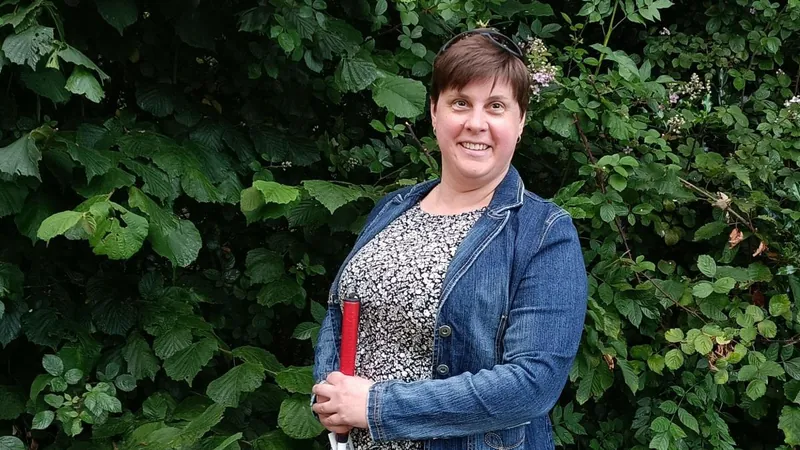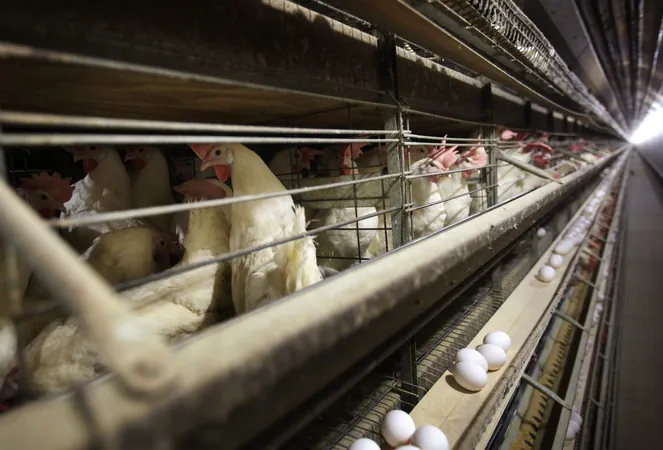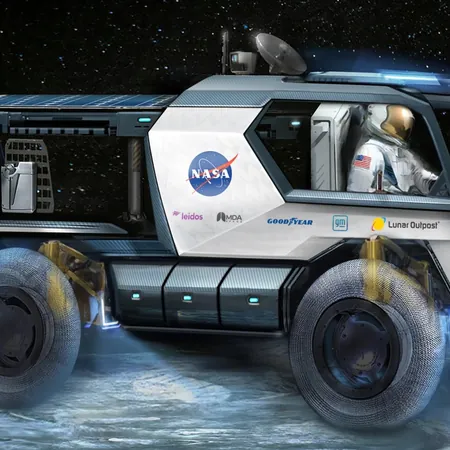
AI Technology Sparks a Life-Changing Revolution for Visually Impaired Individuals
2024-11-26
Author: Sophie
Introduction
In a remarkable testament to innovation, AI is transforming the lives of many visually impaired individuals, including Louise Plunkett from Norwich, who describes the technology as nothing short of revolutionary. Living with Stargardt disease, a genetic condition that leads to progressive vision loss, Louise shares her daily struggles, which include not being able to recognize even her own family members.
Louise's Experience with AI
“Honestly, it impacts everything I do. I had to teach my children how to approach me at the school playground,” she recounts. Yet, this tech-savvy woman has embraced digital tools throughout her journey. Her business specializes in advising companies on how to make their online content more accessible to the visually impaired.
Louise has utilized smart assistants like Alexa, Google Home, and Siri for years to manage everyday tasks. Recently, she discovered an app called "Be My AI," which employs ChatGPT technology to read detailed descriptions of images aloud. This has empowered her to navigate her environment with newfound independence.
The Importance of Independence
“I’m quite stubborn,” she admits. “I don’t like asking for help. So having an AI that I can rely on, especially when no one else is around, is incredibly useful." Louise mentions using the app for practical tasks, from identifying which restroom to use to reading product labels and letters.
Technology Limitations
However, she acknowledges the technology’s limitations. "Sometimes it gives too much detail. For instance, instead of simply stating the color or type of an object, it might describe it in flowery language that adds unnecessary complexity,” she explains.
Be My AI: From Volunteers to AI Assistance
Be My AI, developed by the Danish company Be My Eyes, initially connected users with human volunteers who offered real-time descriptions of their surroundings. With one of its 600,000 users already having requested over 600 image descriptions within the first six months of its release, the shift towards AI assistance highlights a growing trend. "People are finding creative ways to use the app, such as checking images sent to them through WhatsApp instead of reaching out to a volunteer," says Jesper Hvirring Henriksen, the company's CTO.
Future Prospects
Looking ahead, Be My Eyes is exploring groundbreaking features like live video streaming, where the AI could describe real-time events and surroundings, potentially offering a continuous source of insight for users. “It could be like having a personal assistant right in your pocket, guiding you through your day,” Henriksen adds.
Sustainable Model and Human Interaction
Although the app is free for users, Be My Eyes sustains its platform by partnering with businesses eager to be part of a paid directory service tailored for the visually impaired community. Yet, Henriksen is clear that the human touch remains essential. "Many users still opt to connect with volunteers, underscoring that while AI offers efficiency, it can't replicate human interaction,” he explains.
Innovations by Other Companies
Other companies are also entering the space with innovative solutions, such as WeWalk, an AI-powered smart cane that helps users navigate around obstacles and receive public transport updates. Gamze Sofuoğlu, WeWalk's product manager and a blind user herself, emphasizes the independence this technology brings, stating, “It’s about automating navigation without needing to touch your phone.”
The Role of Inclusive Design
Meanwhile, Robin Spinks, head of inclusive design at RNIB, uses AI tools daily to enhance his work and personal life, projecting that 2024 will usher in an era of “multimodal AI” designed to process and analyze not just text but images and videos, thereby enriching user interactions.
Conclusion
Spinks advocates for the incredible potential AI has for improving lives. “While some may fear the rise of AI technology, those of us with disabilities see immense value in tools that genuinely assist us. The benefits of these innovations are unmistakable,” he remarks.
AI technologies are not just changing lives; they are revolutionizing how visually impaired individuals engage with the world—providing them with the independence and support they desperately need. The future looks bright, and the possibilities are seemingly endless.









 Brasil (PT)
Brasil (PT)
 Canada (EN)
Canada (EN)
 Chile (ES)
Chile (ES)
 España (ES)
España (ES)
 France (FR)
France (FR)
 Hong Kong (EN)
Hong Kong (EN)
 Italia (IT)
Italia (IT)
 日本 (JA)
日本 (JA)
 Magyarország (HU)
Magyarország (HU)
 Norge (NO)
Norge (NO)
 Polska (PL)
Polska (PL)
 Schweiz (DE)
Schweiz (DE)
 Singapore (EN)
Singapore (EN)
 Sverige (SV)
Sverige (SV)
 Suomi (FI)
Suomi (FI)
 Türkiye (TR)
Türkiye (TR)